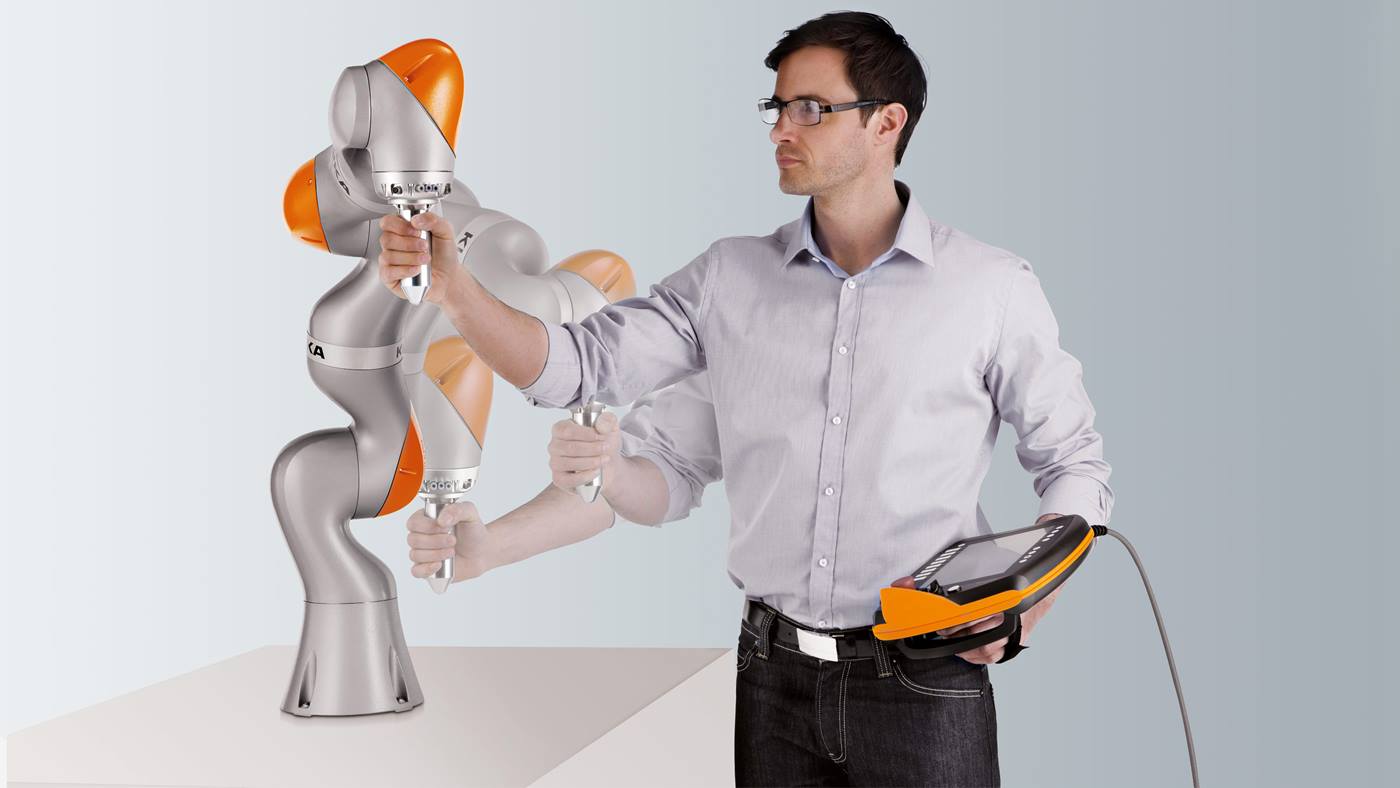LBR iiwa and assembly worker work hand in hand
Dürr AG has developed robot cells incorporating sensitive LBR iiwa lightweight robots from KUKA that are capable of human-robot collaboration for automated adhesive bonding processes during final assembly in the automotive industry. They help to improve the quality of the adhesive bond between components such as GPS antenna covers or tanks and the vehicle body. They also save time and lower unit costs.
April 20, 2017
Precise adhesive beads thanks to the seventh axis of the LBR iiwa
During the automated process of gluing the tank into place in final assembly, the skilled worker moves the tank to a turntable with the aid of a manipulator and then transfers it directly to the robot for further processing. The LBR iiwa applies the adhesive bead onto the tank very evenly and ensures that the bead allows for an accurate fit using sensors on the application head. Once the sensitive lightweight robot has completed its task, the skilled worker fits the tank into the vehicle body at the specified position.
The LBR iiwa detects any fault that arises when the GPS antenna cover is fitted
When the time comes to glue the GPS antenna cover into place, the assembly worker places the workpiece into the robot gripper manually. The gripper sucks onto it and moves it to the adhesive nozzle on the application tower. The LBR iiwa slowly moves the GPS antenna cover upwards to the application nozzle. The adhesive bonding process then begins and the adhesive bead is applied carefully while the robot executes the path. Finally, back at the starting point, the assembly worker removes the GPS antenna cover and mounts it on the vehicle.


